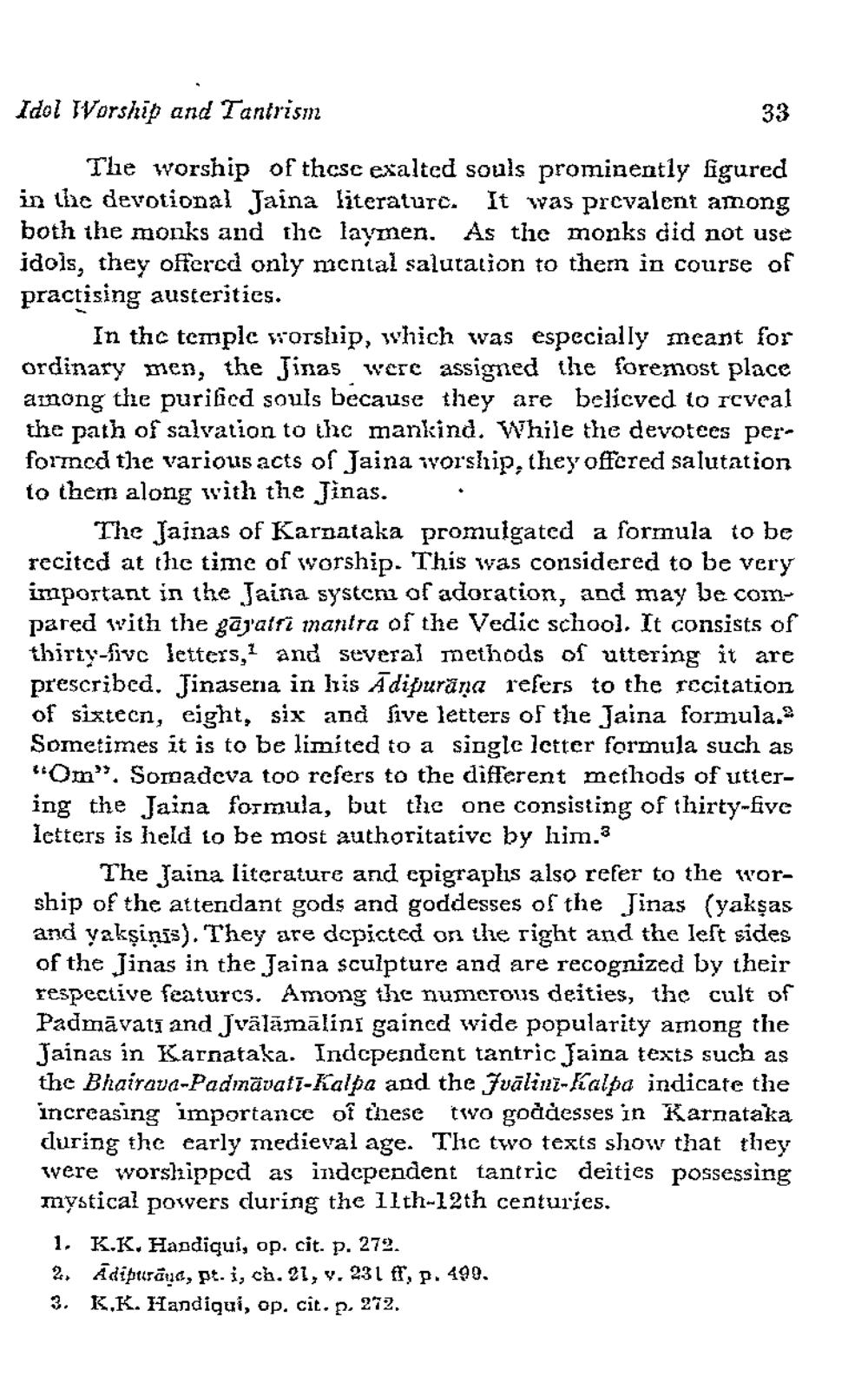________________
Idol IVorship and Tantrism
33
The worship of thcsc exalted souls prominently figured in the devotional Jaina literaturc. It was prevalent among both the monks and the laymen. As the monks did not use idols, they offered only mental salutation to them in course of practising austerities.
In thc temple worship, which was especially meant for ordinary men, the Jinas were assigned the foremost place among the purificd souls because they are belicved to reveal the path of salvation to the mankind. While the devotees perforned the various acts of Jaina ivorship, they offered salutation to them along with the Jinas. .
The Jainas of Karnataka promulgated a formula to be recited at the time of worship. This was considered to be very important in the Jaina system of adoration, and may be compared with the gājatri mantra of the Vedic school. It consists of thirty-five letters, and several methods of uttering it are prescribed. Jinasena in his Ādipurana refers to the recitation of sixtecn, eight, six and sive letters of the Jaina formula. Sometimes it is to be limited to a single letter formula such as "Om". Sompadeva too refers to the different methods of uttering the Jaina formula, but the one consisting of thirty-five letters is held to be most authoritative by him.3
The Jaina literature and epigraphis also refer to the worship of the attendant gods and goddesses of the Jinas (yakşas and yaksinis). They are depicted on the right and the left sides of the Jinas in the Jaina sculpture and are recognized by their respective featurcs. Among the numerous deities, the cult of Padmāvati and Jvälāmālini gained wide popularity among the Jainas in Karnataka. Independent tantric Jaina texts such as the Bhairava-Padmavati-kalpa and the Fuālinz-fialpa indicate the increasing importance of these two goddesses in Karnataka during the early medieval age. Thc two texts show that they were worshipped as independent tantric deities possessing mystical powers during the 11th-12th centuries.
1. K.K. Hapdiqui, op. cit. p. 272. 2. Adipuraus, pt. i, ch.21, v. 231 ff, p. 499. 3. K.K. Handiqui, op. cit. p. 272.




